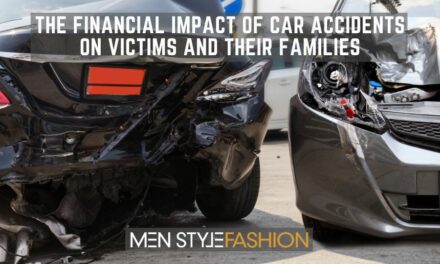Wasim Bux is the Product Manager at the personal car insurance company iGO4. Here, he answers five of the most frequently asked car insurance questions to help ensure you’re safe and protected on the roads.
For many of us, learning how to drive will be an important part of life, giving us complete independence to ferry ourselves around. But, after the driving tests are passed, it’s time to get yourself sorted with a car and some car insurance.
Plenty of first-time, and even experienced drivers, have questions about the car insurance, including prices, types of cover and more. So, if you want to learn more about this necessary cover, read on to find my answers to five of the most frequently asked car insurance questions.
Why Do I need Car insurance?
Car insurance is compulsory for all motorists under the Road Traffic Act 1988. This legislation dictates that all drivers of any age must have financial cover to protect others against any damage you happen to cause. As everybody is required to have it, you’ll benefit from this compensation if you’re on the other side of a claim. However, it’s worth noting that some policies will offer you financial protection if your car is damaged, stolen, or destroyed by fire.
No matter how short the journey or how familiar you are with it, if you’re caught driving without car insurance you’ll be punished for it. This can range from a fixed penalty fine, points on your licence, or removal of your licence if the penalty points add up to the disqualification limit. Any vehicles being driven without insurance are also susceptible to being seized by enforcement, so ensure that any car you’re driving is covered.

What Type Of Cover Do I need?
There are three main types of car insurance in the UK: third party, third party fire and theft, and comprehensive cover.
While third-party insurance is compulsory for all vehicles, third party fire and theft, and comprehensive cover are optional. Here are the differences between the three types:
- Third-party: This policy won’t cover you if your vehicle is damaged in an accident deemed to be your fault, but it will help you cover the costs of any damage caused to other drivers and their vehicles.
- Third-party, fire and theft: This will cover the cost of damage caused to your car by fire, or if it’s stolen. In accidents that were your fault, the third party aspect will only cover damage to other vehicles and road users.
- Comprehensive: Unlike the other two options, this will cover damage to your vehicle, whether an accident was your fault or not.
Comprehensive Covers
Although comprehensive cover offers more than the others, don’t be tricked into thinking it’s out of your budget. In some cases, this type of policy can be as cheap as the compulsory third party cover.
There are some exclusions that won’t be covered by your insurance, which means you’ll have to pay out of your own pocket. This includes tyre damage that isn’t caused by an accident, as well as other general wear and tear. To check what your policy covers you for, consult the policy documents given when you joined with your provider.
Does My cover Transfer When I’m driving Someone Else’s Car?
There are grey areas when it comes to driving cars that don’t belong to you, particularly for those with comprehensive car insurance policies.
Some comprehensive policies do have a DOC (driving other cars) benefit, meaning you are insured to drive vehicles other than your own. But, be aware that this will typically only allow you to drive other cars with third party cover, rather than the comprehensive cover you get on your own vehicle. This would mean, in the incident of a fault accident, your insurer would pay for damage to any third party vehicles or property involved, but you’ll be shelling out for the repairs on the car you were driving.
To ensure you and other road users are protected financially when you’re driving a vehicle other than your own, be sure to check your policy’s terms and conditions before setting off.
What Are Premiums And Excesses?
When you sign up to a car insurance provider, you will be required to start paying a premium: the amount you pay to the insurance company for active coverage. And, in general terms, the more cover you have, the higher your insurance premium payments will be.
However, the cost of your premium payments can also depend on things out of your control, such as statistical information. Things like your age, the type of car, and the area you live in can all dictate the amount you’ll pay towards your cover. But, it can also be influenced by factors taken from your personal information, such as your driving history. This means companies will look into any previous driving violations, as well as general information like your average yearly mileage, and the amount of time you’ve been driving for.
Although usually paid monthly, some car insurance policies may allow you to pay your premiums with different payment plan options, including quarterly, so be sure to check their flexibility on this while you’re shopping around.
There are two types of payment that make up your total excess: compulsory and voluntary. While the former is set by the insurance provider and can’t be changed or negotiated, voluntary excess is the amount you choose to pay in addition to the compulsory one. Paying more voluntary excess may reduce the premium price, making it an attractive option for people who are in a position to pay higher amounts.
For every year you don’t make a claim and rely on your premium, you’ll be rewarded with a no-claims bonus, which transforms into a discount when you renew your policy again. This generally has a limit of 9 years no-claims before you stop receiving discounts, but some providers may offer longer reward periods.
How Can I Reduce My Car Insurance Premium?
To access cheap car insurance, you need to demonstrate that you are a good driver. However, there are some other things you can do to find the best car insurance cover for you and your budget.
Make sure you shop around when renewing your car insurance. Comparing like-for-like cover will ensure you get the most out of your provider and using online comparison services can help simplify the process for you. These will also allow you to enter personalised details like the amount of excess you’re willing to pay and the mileage you’ll drive, so you can get the best quotes.
Technological advances like black boxes and dash cams can also help to reduce your insurance premiums. Black boxes monitor your driving quality and feedback this information to your insurance provider so, if you’re sticking to speed limits and resisting any harsh braking, you may benefit from lower premiums. Additionally, dash cams record everything that happens externally to your car, and this footage can be used as evidence in instances where the accident is judged wrongly, or the fault can’t be decided. This means they can also protect you against fraudulent claims, so you won’t be out of pocket unnecessarily.
Car insurance can seem complicated if you’re new to it and sometimes even when you’re not! So, knowing the basic definitions of everything, as well as how to get the most suitable cover, is vital for any driver. Follow the advice in this guide to become safe, knowledgeable, and protected while on the roads.















